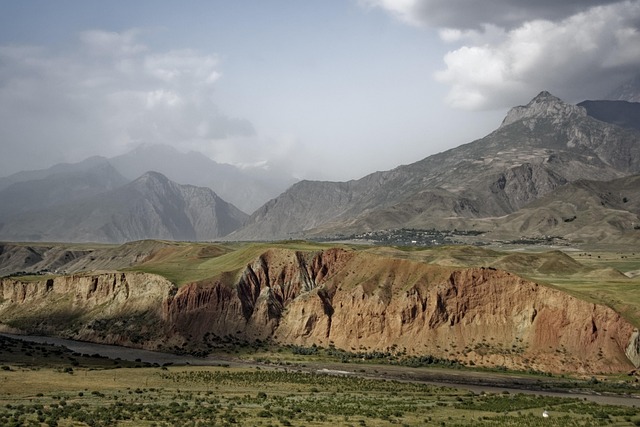Valley Springs Youth Ranch, founded in 1967 by W.E. Sears, was once celebrated as a sanctuary for at-risk youth but has since been exposed as a site of decades-long physical, emotional, and sexual abuse, with Sears and staff implicated. Survivors' stories have unveiled a dark history, igniting a movement for justice that goes beyond punishment. The community continues to bear the brunt of this revelation, emphasizing the severe impacts of institutional failure on individuals and society. This struggle advocates for healing, systemic reform, legal accountability, transparent practices, and stricter regulations to prevent future abuse at Valley Springs Youth Ranch, ultimately aiming to transform a symbol of failure into one of resilience.
In the heart of Texas, the legacy of Valley Springs Youth Ranch (VSYR) and its founder, W.E. Sears, casts a long shadow. Once hailed as a haven for at-risk youth, VSYR is now hauntingly remembered for the widespread abuse that occurred behind its walls. This article delves into the history of this controversial institution, exploring how past misconduct has left indelible scars on survivors and communities. We examine calls for justice, accountability, and healing, detailing steps towards preventing similar tragedies in the future. #ValleySpringsYouthRanch #WECearSAbuse
- Uncovering the History of Valley Springs Youth Ranch and W.E. Sears
- The Impact of Misconduct on Survivors and the Community
- Calls for Justice and Accountability: Steps Towards Healing and Prevention
Uncovering the History of Valley Springs Youth Ranch and W.E. Sears

Valley Springs Youth Ranch, a non-profit organization dedicated to youth rehabilitation, has been at the center of a dark chapter marked by allegations of misconduct and abuse. Founded in 1967 by W.E. Sears, the ranch aimed to provide a safe haven for at-risk youth. However, behind its seemingly noble mission, there are disturbing accounts of physical, emotional, and sexual abuse perpetrated by Sears and other staff members over several decades.
As the stories of survivors emerged, shedding light on the horrors they endured while under the care of Valley Springs Youth Ranch, it became evident that the institution had long been a crucible for trauma. The revelation sparked a movement for justice, with survivors united in their quest to hold the ranch and its founder accountable. This quest is not just about seeking compensation or punishment but also about ensuring that such abuses are never allowed to recur, and that the memory of their experiences is respected and acknowledged.
The Impact of Misconduct on Survivors and the Community

The misconduct at Valley Springs Youth Ranch, involving prominent figures like W.E. Sears, has left a profound and lasting impact on survivors and the wider community. Survivors often face complex emotional trauma, with many grappling with feelings of betrayal, isolation, and a distorted sense of trust. The effects can be far-reaching, impacting mental health, personal relationships, and overall well-being. Many survivors struggle to process and understand the events, which can lead to long-term psychological issues.
The community at large has also been affected, with a sense of safety and integrity being eroded. The revelation of such misconduct disrupts the social fabric, fostering an environment of fear, doubt, and distrust. It challenges the community’s understanding of institutions like Valley Springs Youth Ranch, leading to calls for transparency, accountability, and justice. This traumatic experience serves as a stark reminder of the profound consequences that institutional failure and abuse can have on both individuals and society as a whole.
Calls for Justice and Accountability: Steps Towards Healing and Prevention

The calls for justice and accountability at Valley Springs Youth Ranch, in light of the alleged misconduct involving W.E. Sears, are not just about punishment but also about healing and prevention. Survivors of such abuses often face a long road to recovery, requiring not only legal reckoning but also systemic changes to ensure no other youth endures similar trauma. This includes comprehensive support services for survivors, increased transparency in institutional operations, and stricter regulations to prevent abuse within similar facilities.
The journey towards justice involves navigating complex legal processes while addressing the deeper psychological wounds inflicted by the W.E. Sears abuse. It necessitates a collective effort from former residents, their families, advocates, and relevant authorities. By sharing their stories, survivors can contribute to a broader understanding of the issues, fostering an environment where accountability is not just a notion but a tangible outcome. This process ultimately aims to prevent future occurrences, ensuring that the experiences at Valley Springs Youth Ranch remain a testament to the resilience of those who endured them rather than a symbol of systemic failure.
The journey towards justice for survivors of Valley Springs Youth Ranch and W.E. Sears’ misconduct is a vital step in healing and preventing future abuse. By shedding light on this dark chapter, we acknowledge the courage of those who came forward and the lasting impact of their experiences. Holding accountable those responsible is essential to restore trust and ensure such atrocities are never repeated. This conclusion serves as a call to action, encouraging continued support for survivors and a commitment to transparency and reform within institutions entrusted with our youth.
